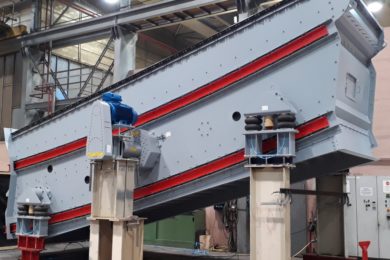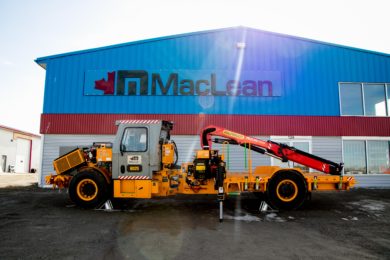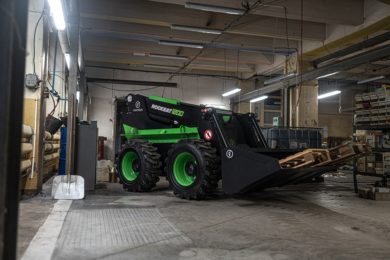A broken coil spring isolator or actuator in conveyors, vibrating screens, crushers, tanks and bin hoppers can bring processes to a complete halt, sending in maintenance staff to undertake the heavy and hazardous task of disassembling and returning to service vital machinery used in industries such as bulk material handling and mineral processing.
Actuation and isolation specialists, Air Springs Supply Pty Ltd, provides silent rubber solutions to such issues with complementary products engineered by Firestone Industrial to overcome both breakage and noise issues endemic to vibrating machinery, it says.
This includes solid no-maintenance Marsh Mellow™ rubber and fabric-reinforced bias ply isolators, which offer high load capacity with constant vibration isolation through changing loads, according to Air Springs Supply. Marsh Mellows will not bottom out like coil springs and offer low natural frequencies to provide excellent isolation (including forced frequencies in the range of 800-1,200 cycles a minute at 13-20 Hz), the company said.
Ruggedly engineered bellows-type air springs Airstroke® pneumatic actuators, which are friction-free for immediate response, and complementary Airmount® pneumatic actuators, which do not require periodic maintenance or lubrication, provide another solution. They are available in sizes ranging from 58-940 mm in diameter and 445 kN force capacity, meaning they can be used for delicate tasks and conveyors, through to heavy shakers, screens and crushers, the company said.
Air Springs Supply said: “Before Marsh Mellows were developed to solve problems with metal springs – including breakdown, replacement and noise – solid rubber springs were either physically too large or became unstable laterally when they were made long enough to provide good isolation.
“The concept of ‘stacking’ rubber springs answered the latter problem but introduced the need for complicated mechanical guide systems to control the lateral movement.”
The Marsh Mellow fabric-and-rubber spring solved this problem and provided a new way to make use of the many advantages of rubber as an isolator, Air Springs Supply Sales and Marketing Manager, James Maslin, said.
“The basic construction of the Marsh Mellow spring includes a solid rubber core with a hollow centre and fabric-reinforced body,” he said. “The controllable variables of this construction are the keys to the extreme design flexibility that the Marsh Mellow spring offers. And the same springs can eliminate potential problems of broken coil springs causing fragment damage to vibrating, stamping and metal forming equipment.”
Marsh Mellow Die Springs can be compressed by up to 40% of their free height at a cycling rate of 50 cycles/min or less, the company said. Cycling rates of up to 300 cycles/min can also be attained.
“Marsh Mellow Springs’ high load capability means fewer springs may be needed in an application, resulting in less overall cost,” the company said. “A spring with a smaller overall size than an all-rubber spring of identical load capacity can be chosen, which is an important factor where space is restricted.”
Airstroke pneumatic actuators and complementary Airmount Isolators provide a further alternative to metal springs, the company says. In effect, these are heavy-duty balloons that both contain no internal moving parts to break or wear. The resulting lack of internal friction and inherent rapid cycling capability makes them very suitable for actuation tasks such as conveying equipment and vibrating machinery, the company said.
“They are also outstanding isolators, in which role Airmounts reliably achieve isolation efficiencies often well exceeding 99%,” Air Springs Supply said. “Their outstanding performance suits them to applications such as suspending vibrating screens or motors and compressors commonly found throughout industrial plants, where they are generally used where weights exceed 100 kg per mounting point.”
A common materials handling isolation application is isolation of bin vibration. This type of vibration is typically used to maintain a homogeneous mix or flow of material inside a hopper where it must be isolated from bin supports to prevent structural fatigue.
Steel springs can be used, but they must be tuned to one specific load and a single height. Air springs provide a high degree of isolation compared with other methods, where they are used down to disturbing frequencies of 3-4 Hz, according to the company. Isolator inflation can be changed to compensate for different loads or heights without compromising isolation efficiency.
Airstrokes and Airmounts offer 40-40,000 kg of pushing or lifting power and strokes (extensions) of up to 350 mm, powered by simple, basic compressor equipment found in nearly every factory, Air Springs Supply said.










